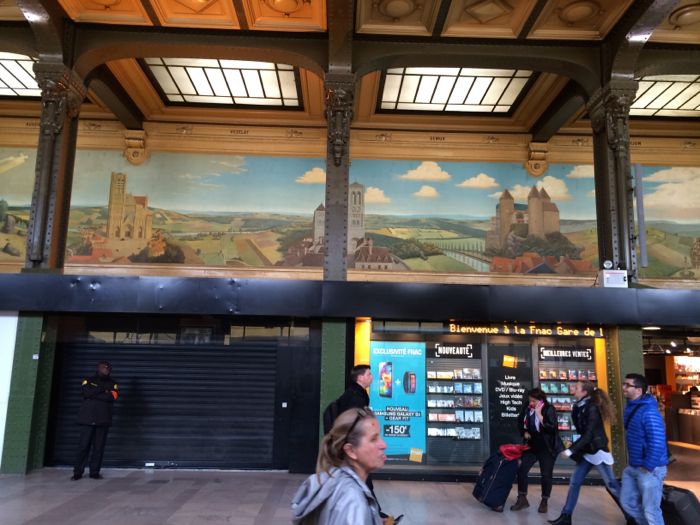Djangocon: introduction to user experience design - Meghan Reilly¶
(One of the summaries of a talk at the 2014 djangocon.eu.)
Meghan Reilly is a user experience strategist.
In the USA, they’re slowly starting to cycle a bit more. And they’re still learning how to share the road as cyclists and car drivers. When she’s cycling, everybody else seems to be a bad car driver: they’re all over the place. When she drives a car, the cyclists seem to be novices that are all over the road.
(Personal comment: if you want to have more cyclists on your road, the cycling infrastructure needs to be good. Look for instance at Dutch junction design)
She asked “who has been frustrated by bad websites”. And afterwards “who ever implemented something in a website in the simplest way possible, thinking ‘the user will figure it out or read the documentation’”…
What is missing is empathy. Empathy is the ability to understand and share the feelings of the other. In user experience design we’re putting the customer at the center. Not ourselves. For many, user experience design will be a totally new territory (just like she’s now in new territory, never having visited Europe before).
What is user experience? The experience you have, good or bad, when trying to do something with a product, application or website. Note: you notice when things are broken. You don’t really notice when something goes right.
User experience? We all experience things differently. So designing one specific experience doesn’t really work. You can however design for an experience, design for a specific set of users.
User experience consists of various elements/stages.
Content strategy.
Information architecture.
Functionality.
Platform.
User interface.
Usability and accessibility.
You have to keep iterating over these elements as they are connected. And all the time you need to keep the user front and center. You build something for the user
What do you want to build and why do you want to build it? You can look at it like this: user goals + business goals = project goals.
Problem is often that we don’t have unlimited budget and unlimited time. Neither is everyone on the same page. If you don’t agree on the goals or how to do something, the best way is to start small and to involve the actual user. The user is the one you need to get happy! User research. Customer interviews. Gather information. Find out what frustrates them. Find out what they want.
Afterwards, create personas. A persona is a fictional person that you describe in quite some detail. “Jane Smith is a real estate agent that wants to …. She often needs to …”. Add a picture. During design decisions you can point at the personas to help guide decisions. 3-5 personas is good.
Observe usability test sessions. Live, if possible and otherwise look at a video later on. So… try to test things out on actual users.
Attractive products are often easier to use. There’s something about the human mind that wants something that is attractive to actually work, so we put more effort in. Again: keep the user in the center! It should work well, you cannot just spray on some eye candy.
Content is important. You need a content strategy, you need to have a plan and direction. The design gets the user in, but the quality of the content keeps them in (or chases them out). Design and content go hand in hand. The design should match the content and vice versa.
Some tips:
Have everyone in the team involved from the start.
By testing early and often, we can fix usability problems early with less waste.
Work together. Collaborate to find solutions to problems.
Talk to your users. They need to be kept at the center of your project.
Test test test. Really helpful.
Some tips for working together in your team:
Share your experience.
Be solution driven.
Have empathy.
For more information, look at http://userexperiencedesigns.com/ . You can get a good free ebook there.
(Personal note: I made a summary of a UI/UX course I followed last year. There’s also a video of paper prototype testing in there.)
There was a good suggestion that came out of the questions regarding the bicycle/car analogy: the bicyclists are the vulnerable road users. So the road designers need to look at them to make a safe road. If only the powerful car users design the road, it’ll stay unsafe. Similar in programming: the powerful programmer often does a lot of design even though he is not the actual site user. This way the site’s design will never be really good.

Drawings in the Paris station “gare de Lyon”

Reinout van Rees
My name is Reinout van Rees and I program in Python, I live in the Netherlands, I cycle recumbent bikes and I have a model railway.
- Weblog
- Over mij (NL)
- About me (EN)
- Ligfiets (NL)
- Klussen en doe-het-zelven (NL)
- Eifelburgenbahn (model railway)
- Videos
- Preken (NL)
- PhD (EN)
Weblog feeds
Most of my website content is in my weblog. You can keep up to date by subscribing to the automatic feeds (for instance with Google reader):